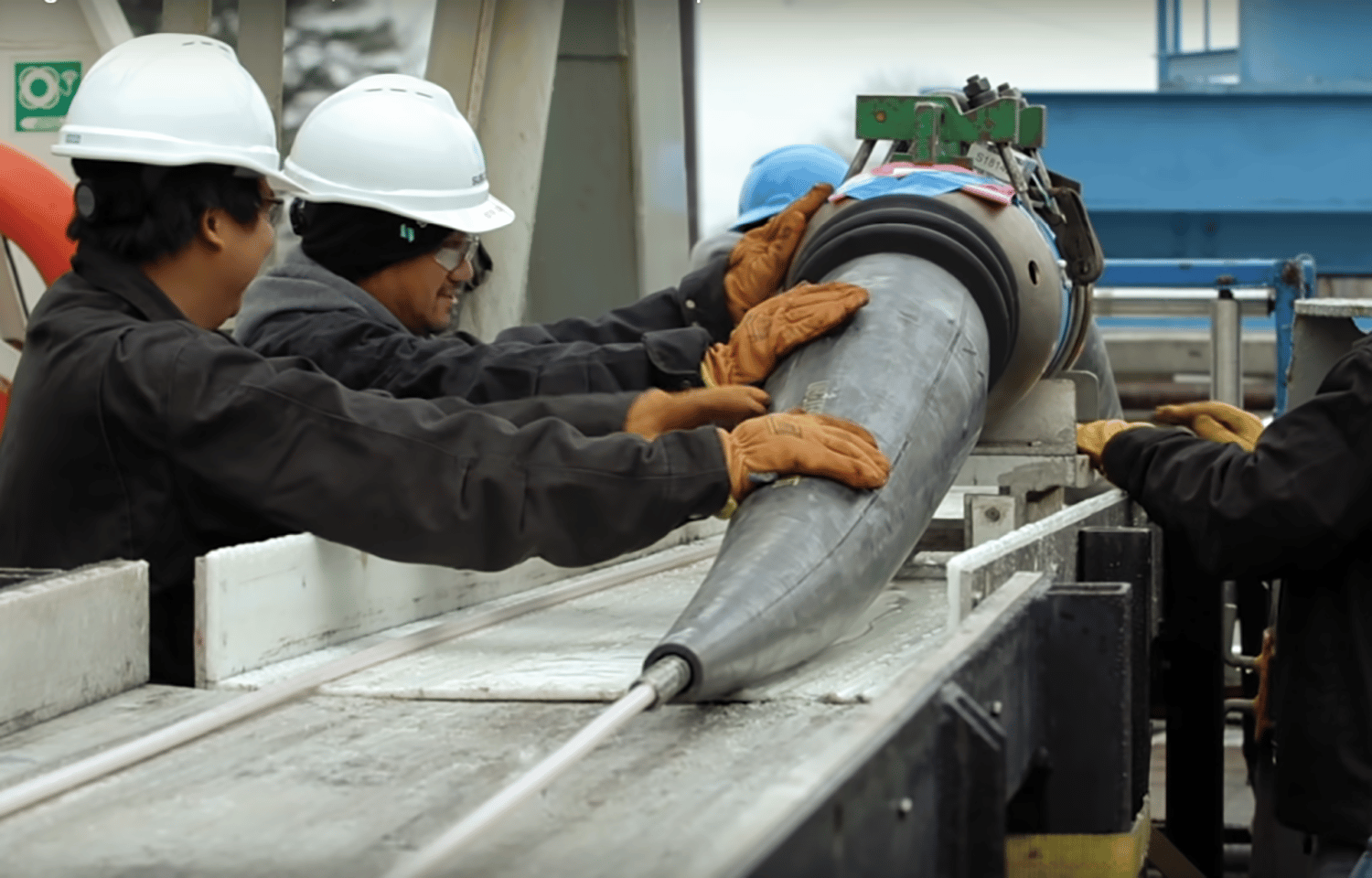
news & trends
C&GM INDUSTRY NEWS:
A new wave in the battle for data—China and the US clash over submarine cable control
Far beneath the waves in some of the most remote areas of the ocean lies a key to modern civilization—the global submarine cable system.
The global submarine cable system consists of fiber-optic cables laid on the ocean floor to carry telecommunication signals between land-based stations. These cables carry about 95% of all global transnational communication data.
As of early 2023, there are 552 active and planned submarine cables connecting all continents except Antarctica. A map of all these cables the Submarine Cable Map, a free and regularly updated resource offered by telecommunications market research company TeleGeography.
Despite the importance of the global submarine cable system to transnational communications, the system is surprisingly fragile. A CTT post in July 2022 (also featured in the August 2022 Bulletin) described how natural disasters, human error, and outdated regulations can cause the system to fail.
ADVERTISEMENT
Accidents are not the only threat to the system’s security, however. In recent years, the U.S. government has grown increasingly concerned about the possibility of this network being used to conduct espionage due to the growing prominence of HMN Technologies Co., Ltd. within this industry.
HMN Technologies, previously Huawei Marine Networks Co., Ltd., is a provider of turnkey submarine network solutions. The company was established as a joint venture between China-based Huawei Technologies (51%) and U.K.-based Global Marine Systems Ltd. (49%) in 2008. However, as of 2020, the company is now owned by China-based Hengtong Optic-Electric Co. Ltd. (81%) and New York-based HC2 Holdings, Inc. (19%), the legacy controlling company of Global Marine Group.
When HMN Technologies first entered the submarine cable industry, it started by building small cable systems in Papua New Guinea and the Caribbean. But it soon became the fastest-growing manufacturer and layer of submarine cables.
“Altogether, the company has worked on some 90 projects to build or upgrade seabed fiber-optic links,” The Wall Street Journal reported in March 2019. “The company is now the fourth-biggest player in an industry long dominated by U.S.-based SubCom and Finnish-owned Alcatel Submarine Networks. Japan’s NEC Corp is in third place.”
While most projects are in the developing world, HMN Technologies has led several significant projects between developed nations, including the 7,500-mile “PEACE Cable” connecting Europe, Asia, and Africa.
The growth of HMN Technologies is concerning to the U.S. government because of its previous owner, Huawei Technologies. Those familiar with U.S.–China relations will recognize Huawei as the company repeatedly targeted by U.S. sanctions to prevent it from building 5G communications networks due to hacking fears.

Workers position a submarine fiber-optic cable for installation. Concerns that the global submarine cable system may be used to conduct espionage is driving a clash between China and the United States.
Credit: CNBC International, YouTube
Even though Huawei Technologies divested its stake in HMN Technologies to Hengtong Optic-Electric Co. Ltd. in 2020, U.S. concerns about the company have not abated.
In March 2023, Reuters published a special report revealing the extent to which the U.S. is addressing its concerns. The report details how, over the past four years, the U.S. intervened in at least six public submarine cable deals in the Asia-Pacific region to keep HMN Technologies from winning that business, or forced the rerouting or abandonment of cables that would have directly linked U.S. and Chinese territories.
There is evidence the U.S. campaign is affecting HMN Technologies.
“HMN Tech supplied 18% of the subsea cables to have come online in the last four years, but the Chinese firm is only due to build 7% of cables currently under development worldwide, according to TeleGeography,” the Reuters report states.
How these political maneuverings will affect the global submarine cable system in the long term remains to be seen. But “When we talk about U.S.–China tech competition, when we talk about espionage and the capture of data, submarine cables are involved in every aspect of those rising geopolitical tensions,” says Justin Sherman, a fellow at the Cyber Statecraft Initiative of the Atlantic Council, a Washington-based think tank, in the Reuters report.
The Reuters report is available here.
Swiss startup cracks the 1-kW ceiling for production of solar hydrogen
The exploration of hydrogen as an alternative industrial fuel source is heating up.
Compared to conventional hydrocarbon fuels, hydrogen only creates water when combusted. That means it can play a significant role in reducing carbon dioxide emissions.
Yet as states vie for federal funding to set up hydrogen infrastructure, and companies start running hydrogen fuel mix tests, there are challenges that must be overcome for hydrogen to become a viable large-scale fuel source.
The development of refractory ceramics that can handle the higher heat release rate of hydrogen firing is one barrier to commercialization. Researchers are making great strides toward overcoming this obstacle.
But production of hydrogen fuel is another challenge that presents a major hurdle. Currently, most hydrogen is produced through steam reforming of natural gas. This “grey” hydrogen process emits about 9–11 kg of CO2 per kg of hydrogen production.
“Green” hydrogen can be produced through water electrolysis. This process emits no CO2 if renewable energy sources, such as wind and solar power, provide the electricity.

Swiss-based solar hydrogen company SoHHytec’s concentrated solar power system produces about half a kilogram of hydrogen in 8 hours, which amounts to a little more than 2 kilowatts of equivalent output power.
Credit: Gebert Rüf Stiftung, YouTube
However, producing hydrogen through water electrolysis is not yet financially viable due to challenges with scaling up the process. As such, in 2021, green hydrogen accounted for less than 0.1% of worldwide hydrogen production, according to a BCC Research report.
Solar hydrogen company SoHHytec is working to overcome the electrolysis scale-up challenge.
SoHHytec is a Swiss-based startup that grew out of the Swiss Federal Institute of Technology Lausanne (EPFL). Their solution, which is based on almost a decade of research and development, uses concentrated solar power to improve the efficiency of green hydrogen production.
In their system, which is illustrated below, a 7-meter-wide parabolic solar dish covered with reflective mirrors concentrates solar radiation onto tandem multijunction III–V semiconductor solar cells. The electricity produced by the solar-cell module drives the water electrolysis process, which takes place through a polymer electrolyte membrane electrolyzer.
In their system, a 7-meter-wide parabolic solar dish covered with reflective mirrors concentrates solar radiation onto tandem multijunction III–V semiconductor solar cells. The electricity produced by the solar-cell module drives the water electrolysis process, which takes place through a polymer electrolyte membrane electrolyzer.
Not all of the concentrated solar energy is converted to electricity. Some of it is converted into waste heat, which is extracted using a heat exchanger. This heat can then be used for space heating or hot water in buildings.
A pilot plant based on this system produced about half a kilogram of hydrogen in 8 hours, which amounts to a little more than 2 kilowatts of equivalent output power. This much energy would allow a car to be driven for about 100 miles (160 kilometers).
This result is significant because it is the first time “We have cracked the 1-kW ceiling for the production of solar hydrogen,” says Sophia Haussener, EPFL professor of renewable energy science and engineering, in an IEEE Spectrum article.
SoHHytec is now building a system with a larger, 9-meter-wide parabolic solar dish. The first demonstration project for the larger system, which is slated to be operational by the end of 2023, will be for a metalworking company that will use the hydrogen and heat for metal processing. Eventually, the SoHHytec researchers imagine that customers will be able to tie together multiple dishes, which will allow the system to be made as big or small as needed.
C&GM Industry News
Kyocera plans ‘smart’ factory for semiconductor applications
Kyocera Corp. reached an agreement to acquire 37 acres of land for a “smart” factory at the Minami Isahaya Industrial Park in Isahaya City, Nagasaki Prefecture, Japan. The agreement includes a developed site of about 14 acres, where construction will begin in October 2023, and another 23-acre, pre-developed site that Kyocera plans to acquire in 2024. The factory will produce fine ceramic components used in semiconductor-related applications, as well as semiconductor packages, with production expected to begin in 2026.
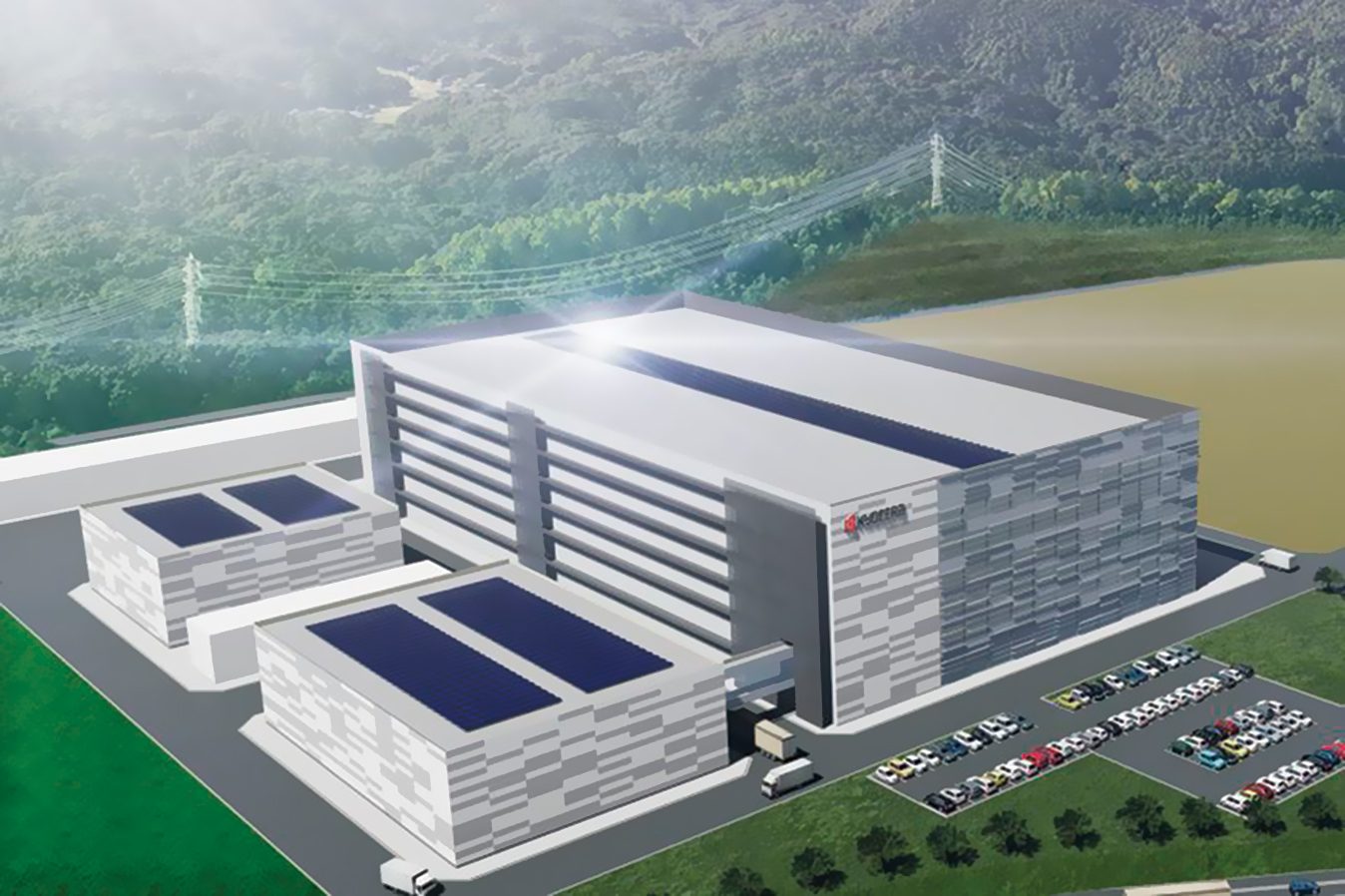
A rendering of the new plant.

IFGL Refractories acquires U.K. refractories business applications
Kolkata, India-based IFGL Refractories Ltd. said its subsidiary in the U.K., Monocon International Refractories, completed the acquisition of Sheffield Refractories, a manufacturer and installer of monolithic refractory products, shotcreting materials, and other specialty monolithic products for the iron and steel, cement, incineration, and waste-to-energy industries. Sheffield’s revenue from operations during the 12 months ending Sept. 30, 2022, was more than GBP 17.5 million.
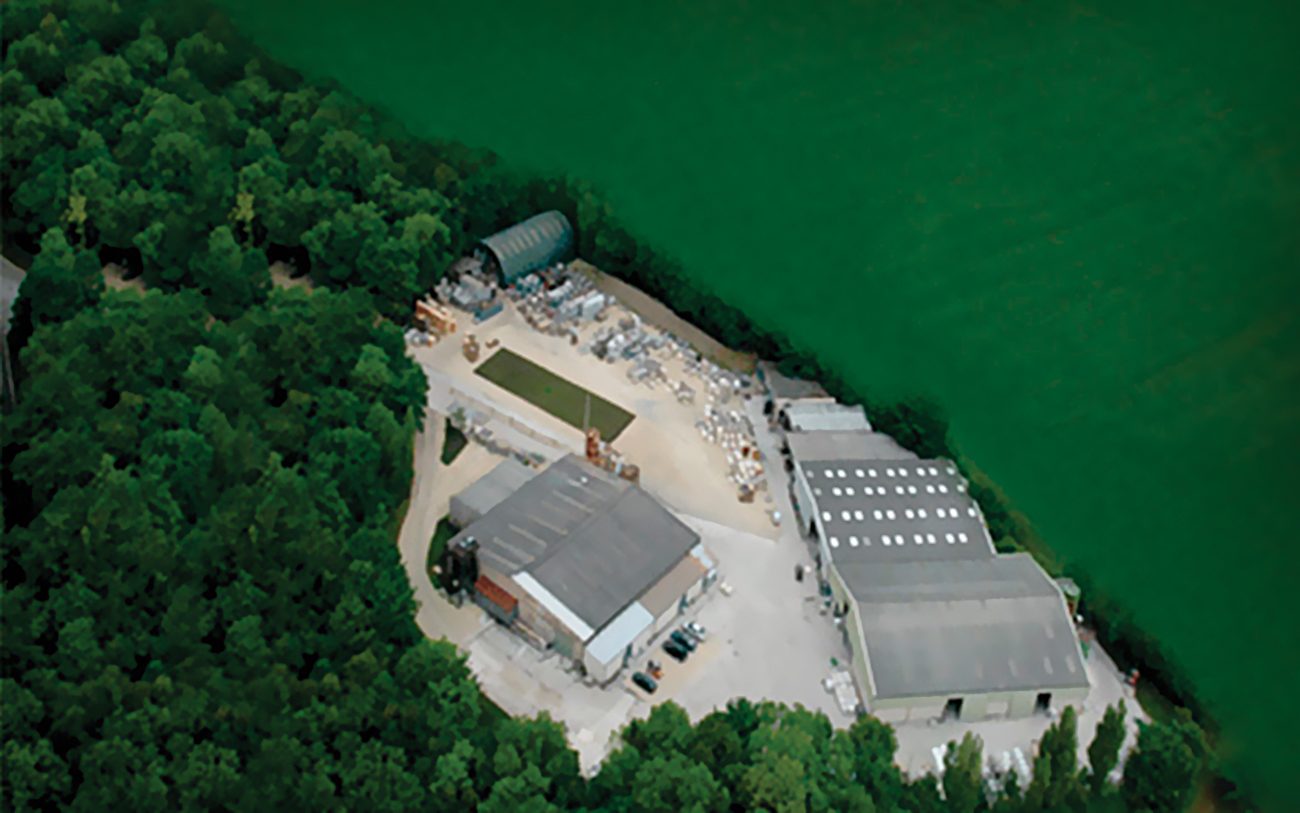
IFGL has manufacturing facilities in India, China, Germany, U.K., and U.S.

Pilkington rebuilds lines, expands in N.C.
Glass manufacturer Pilkington North America, Inc. plans to invest $86.8 million in its operations in North Carolina. The project includes the rebuild of one of its two float glass lines, expansion of existing coating capabilities, and other building and equipment improvements at the company’s float glass facility in Laurinburg, N.C. The project will create 20 jobs. PNA is part of Tokyo-based NSG Group, a supplier of glass and glazing systems for the automotive, architectural, solar, and creative technology sectors. The Laurinburg plant produces float glass for the architectural market.

Pilkington in the U.K. invented the float manufacturing process for glass in 1952.

Defense contract for infrared glass awarded to Schott
Schott was awarded a multimillion-dollar contract from a defense contractor for infrared glass. The order supplies glass for launch tube windows, a component of air defense systems provided to the U.S. Army. Schott is already producing launch tube window parts for an existing order, and will now be able to extend production and further support employment of more than 150 people at its site in Duryea, Pa.
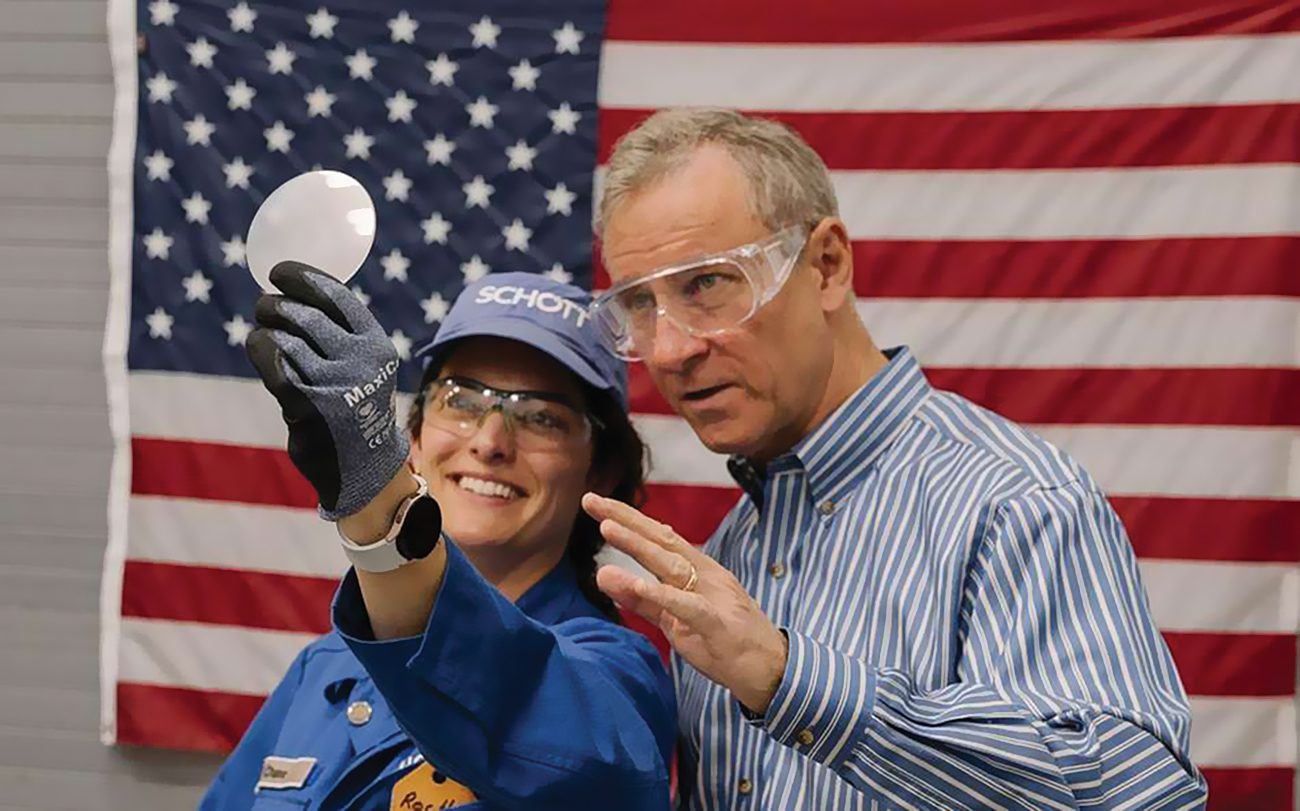
U.S. Rep. Matt Cartwright (D-Pa.) is shown a launch tube window.

Saint-Gobain sells two business units
Saint-Gobain signed an agreement to sell its glass processing business Glassolutions in Switzerland to the privately-owned German group Aequita. The business generated sales of around 25 million euro in 2022, and employs approximately 70 people at its production site in Kreuzlingen. This transaction is part of Saint-Gobain’s business profile optimization strategy. Saint-Gobain also completed the sale of its scintillation and photonic crystals business to SK Capital Partners and Edgewater Capital Partners, two U.S.-based private investment firms.
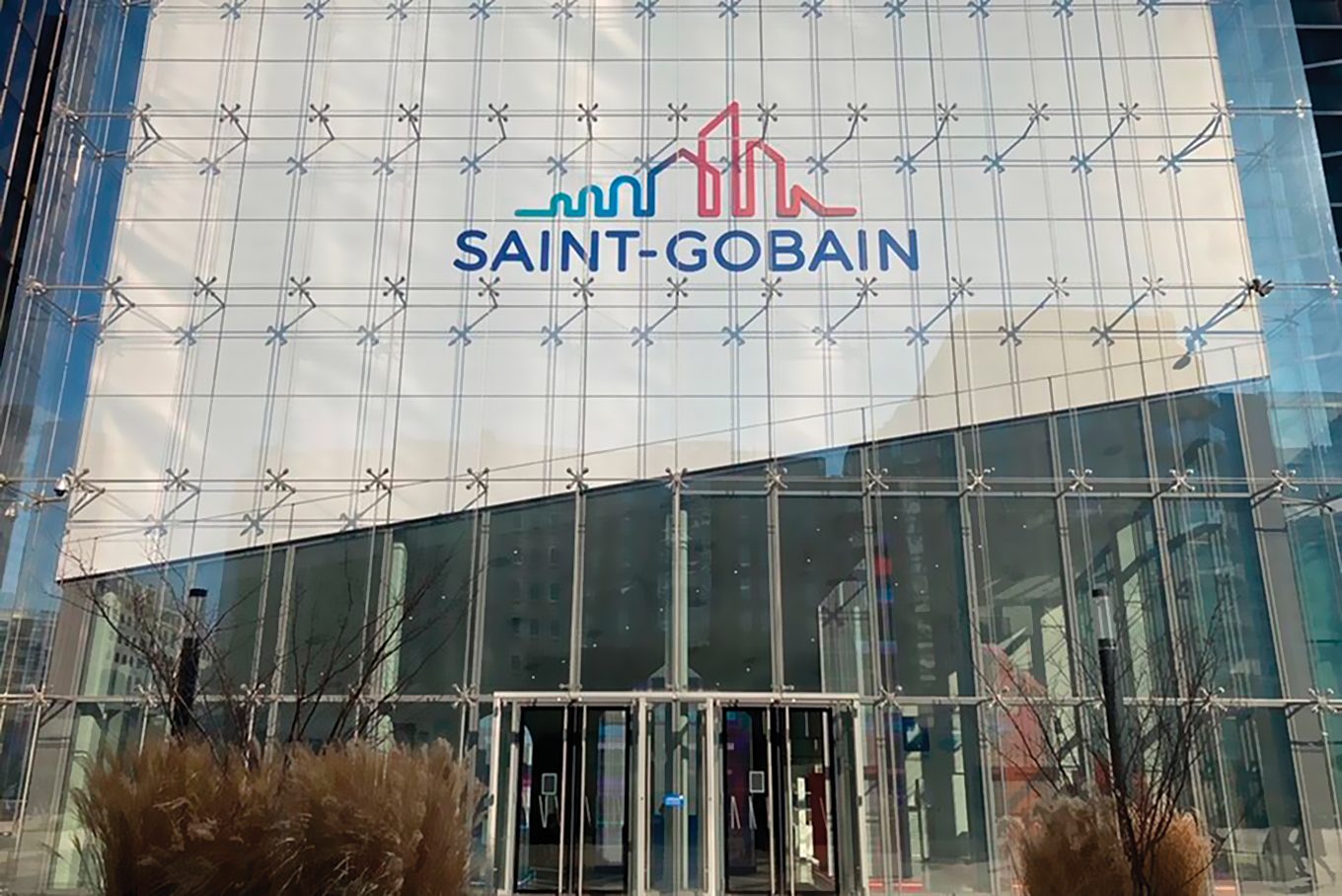
The transactions are part of Saint-Gobain’s “Grow & Impact” strategic plan.

Haydale inks agreement on boron nitride with Saint-Gobain
Haydale signed an agreement with Saint-Gobain to further develop Saint-Gobain’s boron nitride powder solutions. Saint-Gobain Boron Nitride, a business unit within Saint-Gobain Ceramics, develops advanced hexagonal boron nitride, an advanced synthetic ceramic used in electronics, automotive, and metal forming industries, among others. Haydale is a technology and advanced materials group based in the United Kingdom.
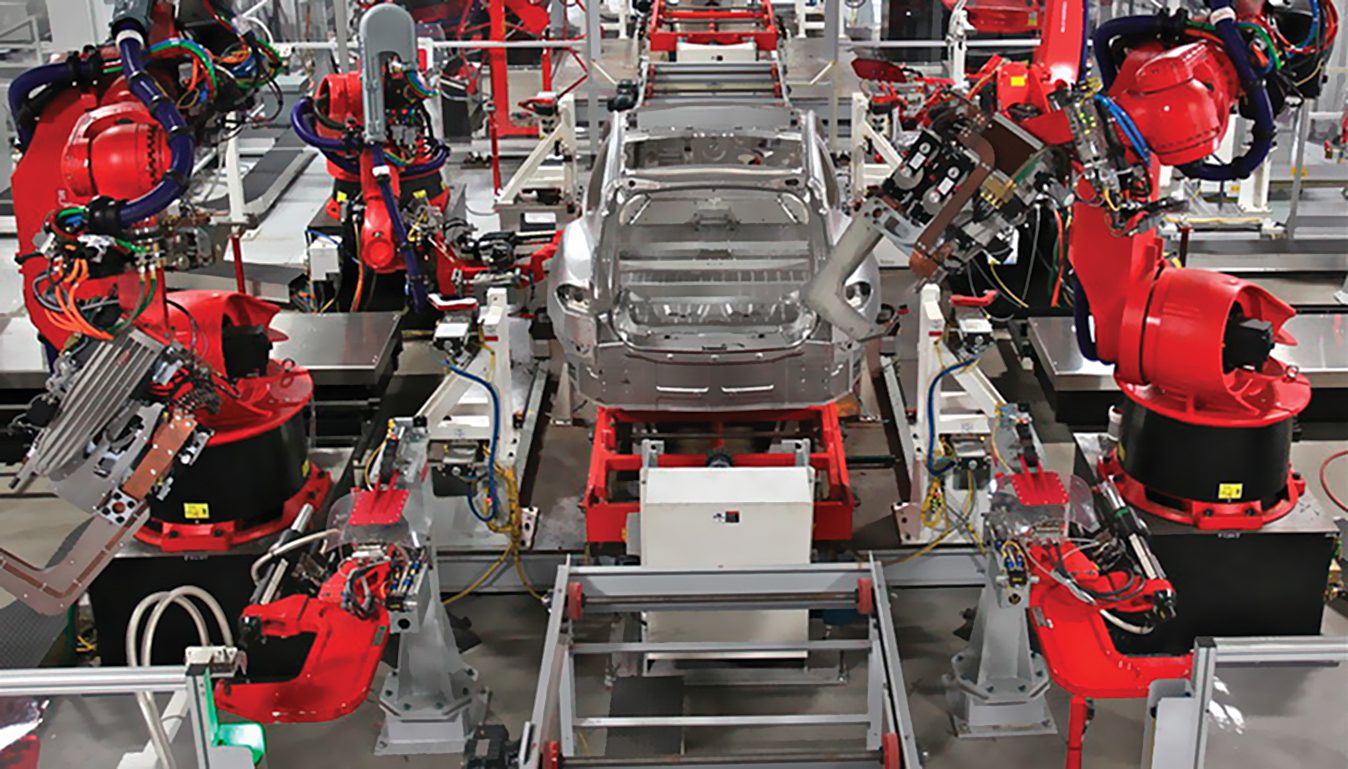
The agreement will continue for two years and may be extended for an additional year.

DOE supports studies on rare earths from mine wastes
The U.S. Department of Energy announced $16 million from the Bipartisan Infrastructure Law to support projects in West Virginia and North Dakota that are developing rare earth element and critical minerals extraction and separation refineries. The University of North Dakota will complete a study to recover and refine minerals from North Dakota lignite mine wastes. West Virginia University will complete a study of producing minerals using acid mine drainage and mineral tailings feedstocks. Both projects were awarded $8 million.
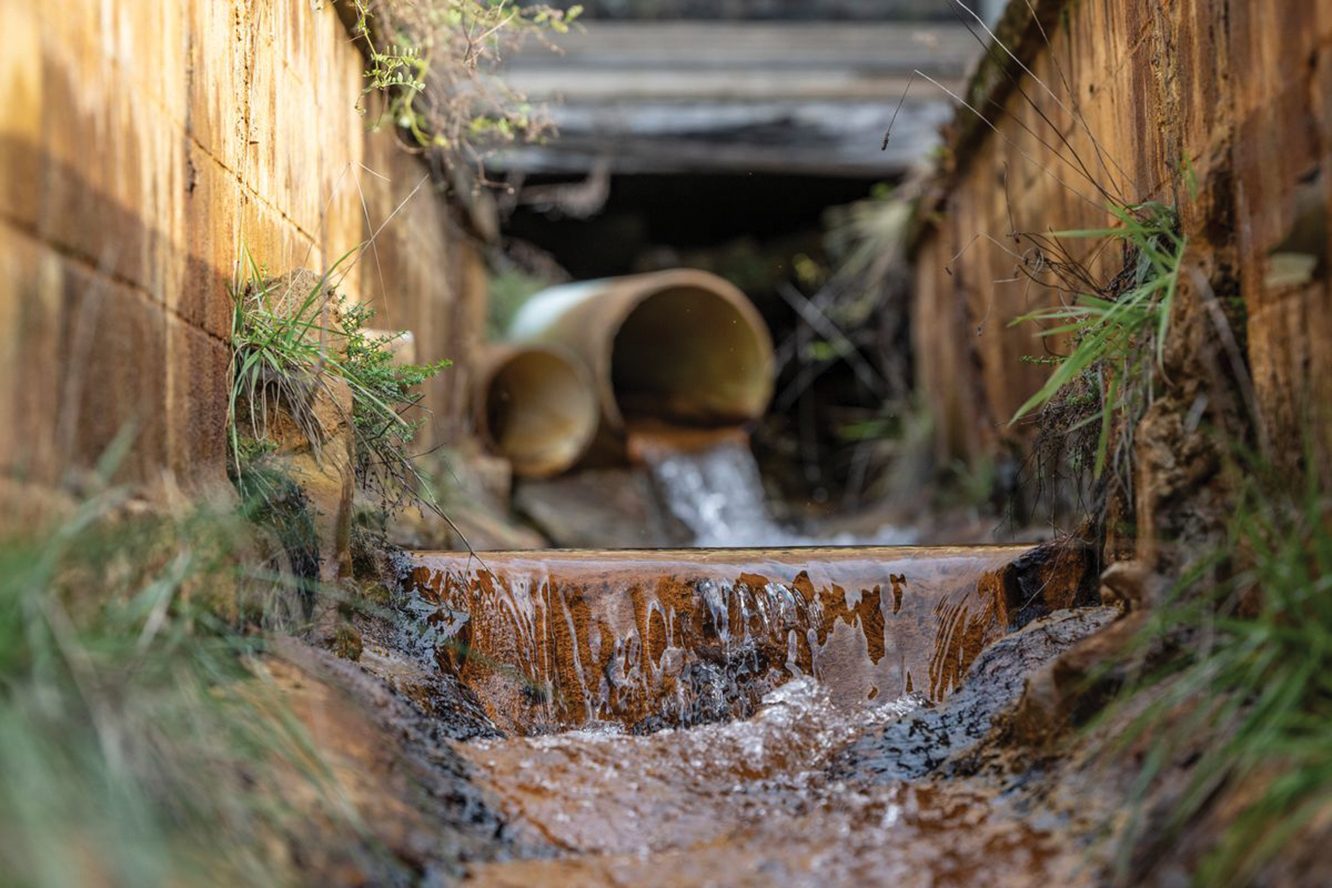
The studies will identify risks and costs of producing rare earth elements from mining wastes.

RAK Ceramics upgrades kiln technology
RAK Ceramics announced a $14 million investment in its sanitary ware production line in the United Arab Emirates to upgrade the facility with new kiln technology. The investment will allow an upgrade of the heat exchanger system with the capability for future conversion to hydrogen fuel and waste heat recycling. RAK, based in Ras Al Khaimah, UAE, specializes in ceramic porcelain wall and floor tiles, tableware, sanitary ware, and faucets.
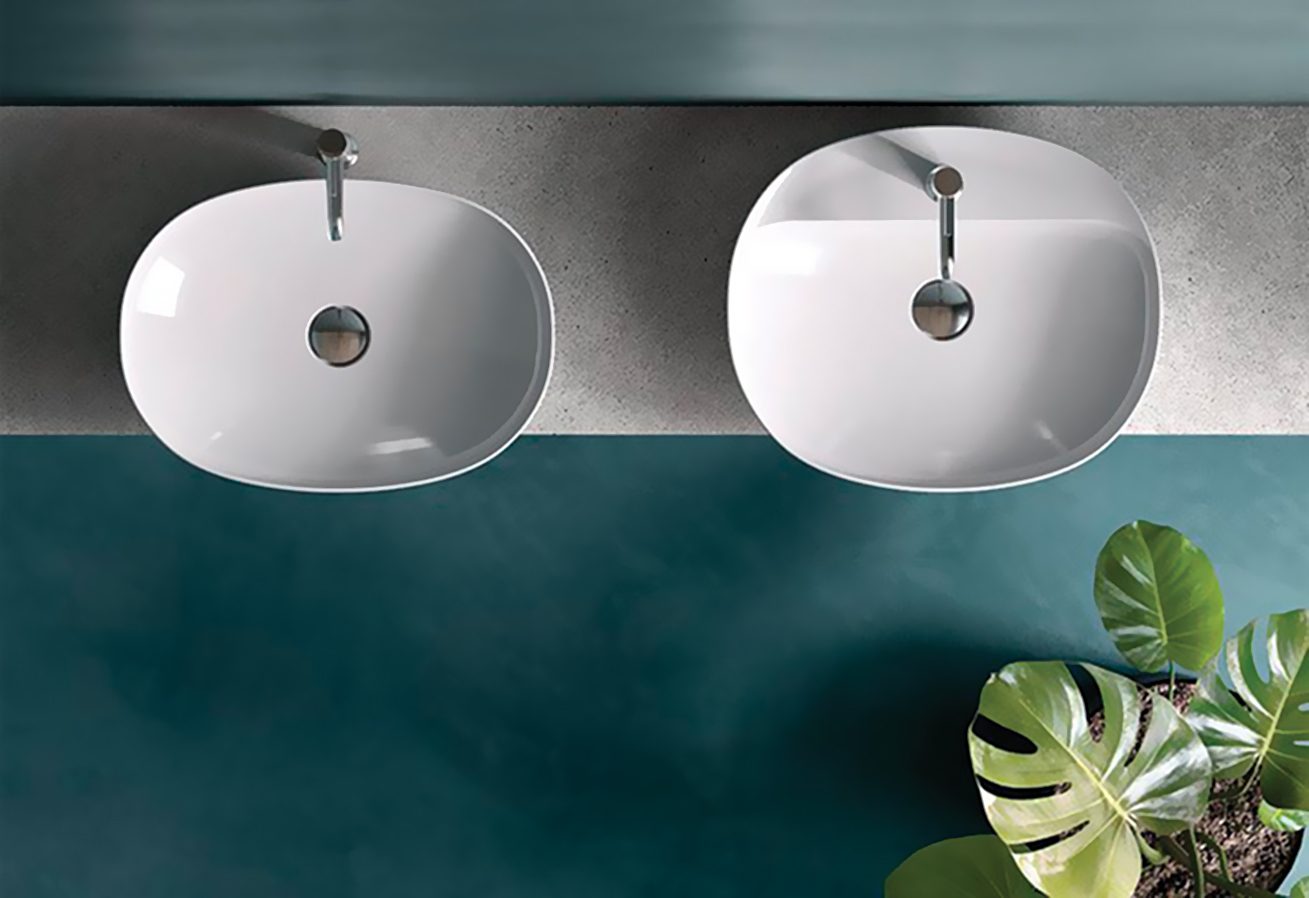
RAK aims to go online with the new machinery in the first half of 2024.



